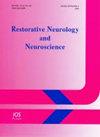Newly Diagnosed Anaplastic Astrocytoma: > 23 Year Survival in a 31-Year and 11-Month-Old Female Treated with Antineoplastons
IF 1.6
4区 医学
Q4 NEUROSCIENCES
引用次数: 1
Abstract
Rationale: Anaplastic astrocytoma (AA), a malignant brain tumor that arises from astrocytic cells, has a poor prognosis. It accounts for 6–7% of gliomas and 1-2% of brain tumors. Objectives: A 31-year and 11-month-old female with an AA is presented to discuss the efficacy of Antineoplastons A10 (Atengenal) and AS2-1 (Astugenal) in the treatment of AA. She presented to the Burzynski Clinic (BC) for treatment and was enrolled in Protocol BT-08, “Phase II Study of Antineoplastons A10 and AS2-1 in Adult Patients with Anaplastic Astrocytoma”, receiving both intravenous (IV) and oral Antineoplastons A10 and AS2-1 (ANP therapy). IV ANP therapy was delivered continuously via subclavian catheter and infusion pump. Tumor response was determined by comparison of baseline brain magnetic resonance imaging (MRI) to sequential brain MRIs during therapy. Findings: The patient presented to the BC with no prior treatment and a one-month history of right arm clumsiness and right leg weakness. Brain MRI and stereotactic biopsy performed elsewhere had demonstrated an AA. Baseline MRI at the BC showed a 2.0 cm2 nonenhancing lesion and two enhancing lesions (0.02 cm2 and 0.15 cm2 ) in the left parietal lobe. IV ANP therapy was given over 56 days, and a complete response (CR) was demonstrated after one month of therapy. Oral ANP therapy was subsequently provided for 17 months. At last follow-up, in June 2023, the patient was healthy and showed no evidence of recurrent disease. She had an overall survival (OS) of > 23 years and one month since diagnosis and an OS of > 23 years since the start of IV ANP therapy. Conclusions: The utilization of ANP therapy in an adult female patient with AA is presented. The patient achieved a CR and prolonged OS, suggesting that ANP therapy may be an effective therapeutic option for adults with AA.新诊断的间变性星形细胞瘤>31岁11月龄女性抗瘤酮治疗23年生存率
理由:间变性星形细胞瘤(AA)是一种由星形细胞引起的恶性脑肿瘤,预后较差。它占神经胶质瘤的6-7%和脑瘤的1-2%。目的:介绍一名31岁11个月的AA女性患者,探讨抗瘤素A10 (Atengenal)和AS2-1 (Astugenal)治疗AA的疗效。她来到博金斯基诊所(BC)接受治疗,并参加了BT-08方案,“抗瘤素A10和AS2-1在间变性星形细胞瘤成人患者中的II期研究”,接受静脉注射(IV)和口服抗瘤素A10和AS2-1 (ANP治疗)。静脉ANP通过锁骨下导管和输液泵持续给药。在治疗期间,通过对比基线脑磁共振成像(MRI)和序贯脑磁共振成像来确定肿瘤反应。结果:患者入院前未接受任何治疗,有一个月的右臂笨拙和右腿无力病史。脑MRI和其他部位立体定向活检显示AA。基线MRI显示左顶叶有一个2.0 cm2的非强化病灶和两个强化病灶(0.02 cm2和0.15 cm2)。静脉ANP治疗超过56天,治疗1个月后显示完全缓解(CR)。随后口服ANP治疗17个月。在2023年6月的最后一次随访中,患者健康,无疾病复发迹象。她的总生存期(OS)为100万美元;确诊至今23年零1个月。静脉ANP治疗至今已有23年。结论:介绍了一名成年女性AA患者应用ANP治疗的情况。患者达到了CR和延长的OS,提示ANP治疗可能是成人AA患者的有效治疗选择。
本文章由计算机程序翻译,如有差异,请以英文原文为准。
求助全文
约1分钟内获得全文
求助全文
来源期刊
CiteScore
5.40
自引率
3.60%
发文量
22
审稿时长
>12 weeks
期刊介绍:
This interdisciplinary journal publishes papers relating to the plasticity and response of the nervous system to accidental or experimental injuries and their interventions, transplantation, neurodegenerative disorders and experimental strategies to improve regeneration or functional recovery and rehabilitation. Experimental and clinical research papers adopting fresh conceptual approaches are encouraged. The overriding criteria for publication are novelty, significant experimental or clinical relevance and interest to a multidisciplinary audience. Experiments on un-anesthetized animals should conform with the standards for the use of laboratory animals as established by the Institute of Laboratory Animal Resources, US National Academy of Sciences. Experiments in which paralytic agents are used must be justified. Patient identity should be concealed. All manuscripts are sent out for blind peer review to editorial board members or outside reviewers. Restorative Neurology and Neuroscience is a member of Neuroscience Peer Review Consortium.

 求助内容:
求助内容: 应助结果提醒方式:
应助结果提醒方式:


